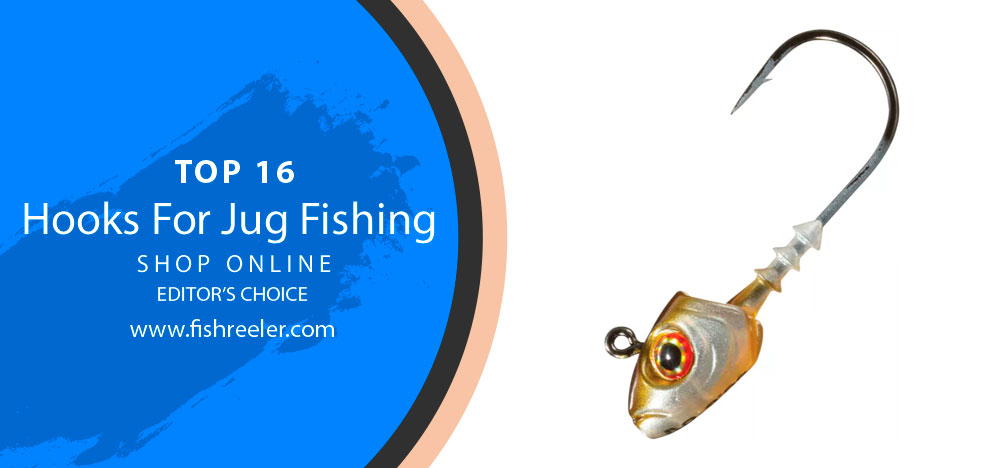
Diving Into the World of Jig Hooks: The Unsung Heroes of Fishing
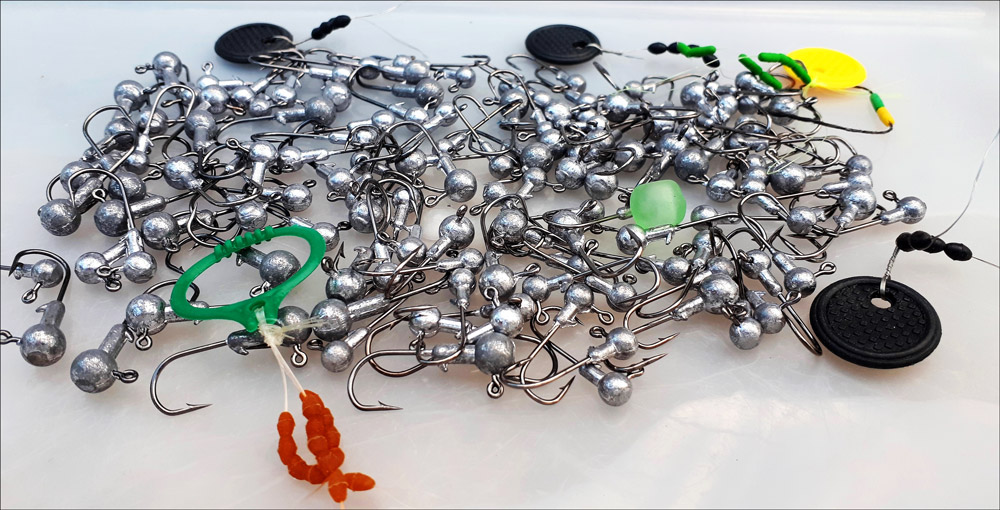
As the sun🌞 begins to rise, casting a soft, golden light across the lake🌅, a gentle mist hovers above the water. The world is quiet and peaceful; the only sounds to be heard are the soothing rustle of the leaves🍃 and the gentle lapping of water against the shoreline🌊. In these serene moments, there’s a particular thrill that only fishermen truly understand: the anticipation of the catch🎣, the thrill of the unknown, the dance between patience and action⏱️. And at the heart of this age-old dance, unassuming yet crucial, is the jig hook🪝.
Jig hooks, though small and seemingly simple, are among the most essential components of a fisherman’s gear🎒. These specialized hooks are the heroes behind the scenes, silently contributing to many successful fishing trips🏆.
A jig hook, as its name implies, is a hook that’s molded into a lead or other metal and typically paired with a soft body to attract fish🐠. But it’s not just a hook; it’s a finely-tuned piece of engineering designed to hook fish efficiently and keep them hooked. The jig hook’s purpose is straightforward, yet its impact is profound. It can mean the difference between a trophy catch🏅 and a tale of ‘the one that got away’🐟.
One of my earliest fishing memories is of my grandfather👴 teaching me how to properly attach a jig hook. The old man, his hands weathered and toughened from years of fishing, handled the tiny jig hook with a surprising gentleness. He explained to me that “fishing is not just about the rod, son. It’s about understanding your tools🛠️, and a good fisherman knows that a jig hook is not just a piece of metal. It’s a piece of art🖌️, a piece of science🔬, and knowing how to use it makes all the difference.”
🔶That lesson, taught by the lakeside many years ago, remains with me today🔖. As we delve further into the world of jig hooks, my hope is that you’ll come to appreciate their importance in the grand tapestry of fishing as I have. And perhaps, you’ll find a few tips and insights💡 to make your next fishing expedition even more successful🥇.
A Journey Through Time: The Evolutionary Tale of Jig Hooks
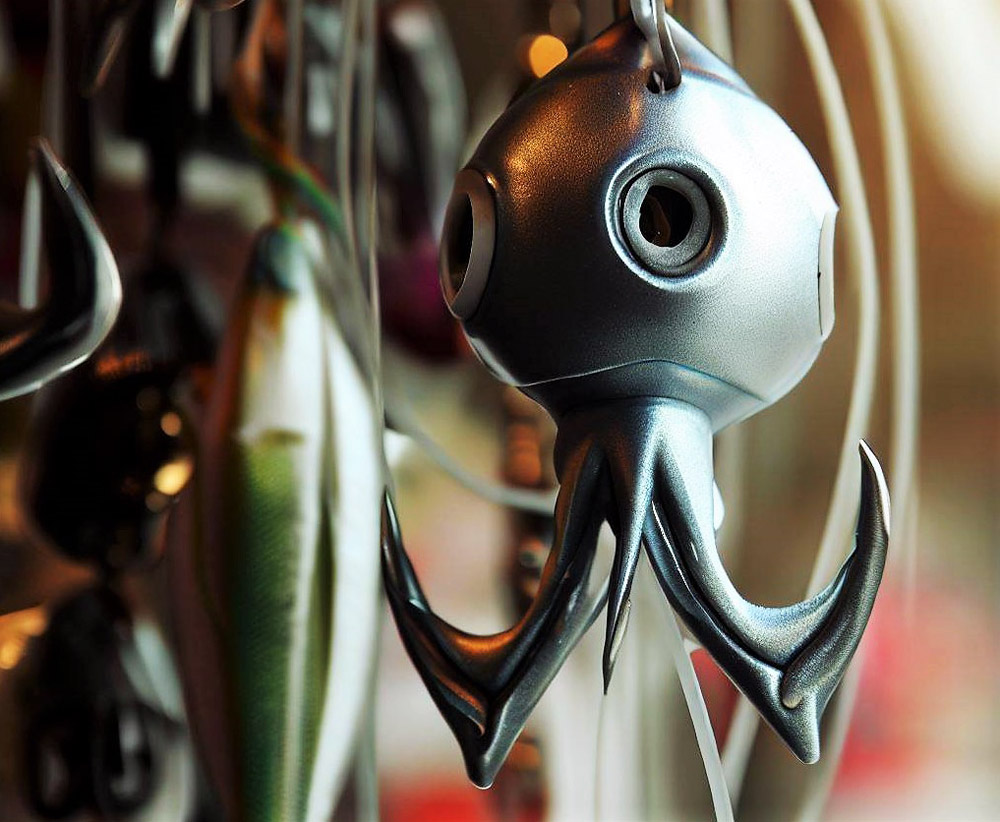
The humble jig hook🪝, as we know it today, has its roots in antiquity. The art of catching fish with a hook and line is a practice that predates recorded history📜, and over the millennia, our ancestors continuously refined their tools and techniques to increase their efficiency🛠️.
Early fishhooks were made from a variety of materials, such as bone💀, wood🪵, shell🐚, and later, bronze. These were not jig hooks in the modern sense, but they were the precursors to the hooks we use today. The concept of adding weight to a hook to make it sink and mimic the movements of prey underwater—what we now call a jig—dates back hundreds of years⏳.
As fishing methods evolved and became more sophisticated🎣, so too did the hooks. With the advent of the Industrial Revolution⚙️ and the development of new materials and manufacturing techniques, steel and later stainless steel became the materials of choice for fishhooks due to their strength and durability💪.
The vintage jig hook designs of the early 20th century were simple yet effective. They typically had a round bend and a straight shank, with the lead molded directly onto the hook. These hooks were effective for their time, but they had limitations in terms of the variety of fish they could effectively catch🐟.
Fast forward to the present day⏭️, and jig hooks have undergone a significant transformation🔄. Thanks to advancements in materials science🧪, manufacturing techniques, and our understanding of fish behavior, modern jig hooks come in an array of shapes, sizes, and designs to cater to different fishing conditions and target species🎯.
Modern jig hooks, such as the wide gap, 60-degree jig, and others, offer increased hooking efficiency and versatility. For example, a wide gap jig hook allows for the use of larger and bulkier baits, providing a more enticing presentation for bigger fish🐠. Similarly, the 60-degree jig hook is designed to give jigs an appealing, natural movement in the water, increasing the chances of a strike💥.
Moreover, today’s jig hooks are not only more effective but also more humane, with many designs focusing on reducing harm to the fish and promoting catch-and-release fishing practices🤝🐡.
🔶As we look back at the history and evolution of jig hooks, it’s evident that these small tools have made big strides📈. From their rudimentary beginnings to their modern, finely-tuned designs, jig hooks have adapted and evolved, mirroring the progression of fishing itself. They stand as a testament to human ingenuity🧠, our deep connection with nature🌱, and our perpetual pursuit of mastery over the art and science of fishing🎨🔬.
Unraveling the Design: The Blueprint of a Jig Hook
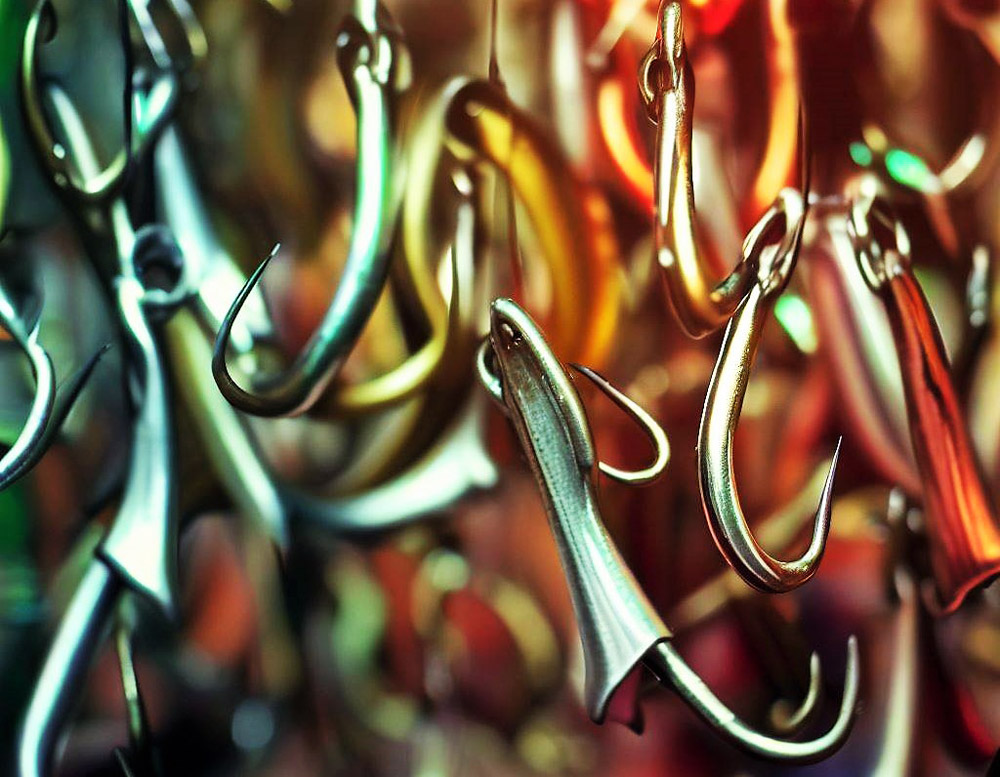
At first glance, a jig hook might appear as a simple piece of hardware. However, its simplicity belies a complex and intricate design, finely tuned for its purpose. Each part of the jig hook plays a vital role in ensuring its effectiveness.
Let’s delve into the key parts of a jig hook:
| Part | Description |
|---|---|
| Eye | This is the circular part at the top of the hook where the fishing line is threaded. The eye of the hook can be directly in line with the shank or offset, and it’s often reinforced for added strength. |
| Shank | This is the long, straight part of the hook that connects the eye to the bend. The length of the shank can greatly influence how a bait or lure is presented to the fish, and thus it plays a critical role in the hook’s effectiveness. |
| Bend | The bend is where the shank curves around to meet the point. The shape and angle of the bend can affect the hook’s ability to penetrate the fish’s mouth and stay hooked. |
| Point | As the name suggests, the point is the sharp end of the hook that penetrates the fish’s mouth. Points can be designed in various shapes, each with its advantages, such as needlepoint, rolled-in point, knife-edge point, and so on. |
| Barb | AThis is a small projection near the point of the hook that points in the opposite direction. The purpose of the barb is to prevent the hook from slipping out once it has penetrated the fish’s mouth. |
When it comes to the materials used to make jig hooks, the most common are high-carbon steel and stainless steel. High-carbon steel is preferred due to its strength and durability. It’s also relatively easy to sharpen, which ensures the hook point can always be kept in optimal condition. Some high-carbon steel hooks also feature a corrosion-resistant coating for added longevity, especially in saltwater environments.
Stainless steel, on the other hand, is naturally corrosion-resistant, making it an excellent choice for saltwater fishing. However, it’s generally a bit harder to sharpen than high-carbon steel.
Another important aspect is the finish or coating applied to the hook. These can range from simple paint to enhance the visual appeal of the hook to technically advanced finishes such as Teflon or Titanium Nitride, which improve the hook’s performance by reducing friction, improving penetration, and adding durability.
🔶From the eye to the barb, every part of the jig hook is meticulously designed to optimize your chances of a successful catch. The materials used further enhance its performance, making it a key player in your fishing adventures.
🎦Video YouTube Jigging up a limit – Ocean Bottom Fishing!
Level Up Your Angling Game: The Essential Guide to Jig Hooks
Fishing with jigs, also known as jig fishing, is a great way to catch fish. While there are many different types of hooks that can be used for jig fishing, some perform better than others. Are you looking for the best hooks for jig fishing? If so, you’re in the right spot! In this blog post, we will share with you our top-rated hooks for jig fishing.
1# Gamakatsu Model 604 Jig Hook
The Gamakatsu Model 604 Jig Hook is a popular choice for anglers who enjoy making their own jigs. With its heavy-gauge wire and precision, chemically sharpened point, this hook is built to handle a variety of fishing conditions. The 90? eye bend also makes it versatile for a range of jig making applications.
2# Mustad Aberdeen Jig Hook
When you need a jig hook that can handle any situation, reach for Mustad’s Aberdeen Jig Hook. Made of 1X fine wire and Nor-Tempered for strength, this hook can handle even the biggest fish. With a rust-resistant finish and Opti-Angle Needle Point, it’s ideal for both fresh- and saltwater use.
3# Eagle Claw 635 O’Shaughnessy Jig Hook
4# Eagle Claw Model 413 O’Shaughnessy Jig Hook
Heave your bait with authority with the Eagle Claw® Model 413 O’Shaughnessy Jig Hook. This beefy hook is built for maximum pulling power, with a 60° leg for true inline action and heavy wire construction. The non-offset point ensures good gripping power on your prey, while the stylish design makes it perfect for saltwater jigs heads.
5# Eagle Claw Round Jighead
The Eagle Claw Round Jighead is a beautifully crafted ballhead jig that is perfect for anglers who demand the best. The jig is made from a quality cold forged light wire Aberdeen jig hook that is precision moulded for an exact fit. The smooth paint job and clean, burr-less attachment point make this jig head a must-have for any serious fisherman. Painted eye.
6# Z-Man Finesse ShroomZ JigheadZ
Looking for a reliable and effective jighead that will help you catch more fish? Look no further than the Z-Man Finesse ShroomZJigheadZ. The ElaZtech material ensures that your bait will slowly flutter and dart towards the bottom, almost guaranteed to elicit a strike. Additionally, the welded wire keeper prevents baits from sliding down the hook shank, while the super-sharp black nickel hooks increase your chances of success. Whether you’re using it for the Ned Rig or another Midwest-style of finesse fishing, you can’t go wrong with the Finesse ShroomZJigheadZ.
7# Bass Pro Shops Painted Jigheads
Bass Pro Shops Painted Jigheads are a fisherman’s dream come true. These tough, fish-holding bronze Mustad® hooks with a double-eye design make rigging and casting a breeze, while the long-lasting powder-coated paint finish in a wide range of colours attracts fish like flies to honey. Plus, the reusable clam pack container means you can take them wherever you go without having to worry about losing any tackle.
8# Z-Man Trout Eye Jigheads
The Z-Man Trout Eye Jigheads are some of the most well-crafted and effective jigheads on the market. They’re hand-poured and moulded to perfection, with a sharp Mustad UltraPoint hook and super-sized 3D eye that fish can’t resist. Whether you’re targeting trout, reds, snook, tarpon, or any other inshore predator, these jigheads will help you land more fish.
9# Strike King Squadron Swimbait Jigheads
The Strike King Squadron Swimbait Jigheads are the perfect choice for anglers who want a durable and reliable jighead. With a wide-gap, chemically sharpened hook and black nickel finish, these jigheads are ideal for use with all hollow body swimbaits, grubs and swimming tail baits. The Strike King Squadron Swimbait Jigheads are sure to give you the edge you need to land that big fish!
10# Gene Larew Biffle HardHead Jigheads
Looking to up your bass fishing game? Check out the Gene Larew Biffle HardHead Jighead. This innovative head offers the benefits of a football head, plus the added action of a worm hook that moves freely with your bait. Tommy Biffle used this head to win the BASS Elite Series ”Sooner Run” event – so you know it’s good!
11# VMC Neon Moon Eye Jighead
VMC’s Neon Moon Eye Jighead is the perfect choice for walleyes when fishing live bait in rivers. The super-realistic aspirin-style jighead provides maximum control in current and features embedded 3D holographic eyes. The low-profile wire keeper also allows you to add plastic trailers for even more action.
12# Eagle Claw Lazer Pro-V Ball Jighead
If you’re looking for a pro-level ball jighead, look no further than the Eagle Claw Lazer Pro-V. This jig is moulded onto a premium Pro-V hook with a wider gap and greater holding strength than traditional hooks. It also features a round lead head with a premium painted finish. So whether you’re targeting panfish or big bass, this jighead has everything you need to drive that hook home.
13# Berkley Fusion19 Swimbait Jighead
The Berkley Fusion19 Swimbait Jighead is perfect for the novice angler, with a realistic look and feel. The custom 40°, needle-point hook provides optimal tracking and presentation, while the conical bait keeper with wire locks bait into place. This jighead is ideal for a variety of bait styles and sizes – from bass fishing to inshore saltwater fishing.
14# Bass Pro Shops Squirt Head with Red Hook Lead Heads
When you’re looking for a great product at an unbeatable price, Bass Pro Shops Squirt Head lead heads are the answer. With their high quality and durable construction, these lead heads will help you get the most out of your fishing trips. So don’t go another day without them – grab a pack today!
15# Storm 360GT Searchbait Jigheads
The Storm 360GT SearchbaitJigheads are the perfect way to create a natural presentation with your 360GT Searchbait tails (not included). The body of the jighead snugs tightly to the tail, with no gaps, for a lifelike look that is sure to attract fish. The jighead is also weighted and features 3D holographic eyes and rattles for extra attraction. It is fitted with a VMC Coastal Black hook with a 60° eye for superior holding power.
16# VMC Swimbait Jighead
Check out the VMC Swimbait Jighead. This jighead features 3-D eyes, flared gills, and an eye-catching paint scheme that is sure to trigger some aggressive strikes. The concave head also provides for a seamless transition from the jighead to the plastic body (not included). And with two-wire bait keepers, you can rest assured that your plastic bait will stay firmly in place. The forged steel hook is also 1X strong, providing exceptional strength and durability. So if you’re looking to up your fishing game, make sure to give the VMC Swimbait Jighead a try.
The Many Faces of Jig Hooks: Exploring Their Types and Uses
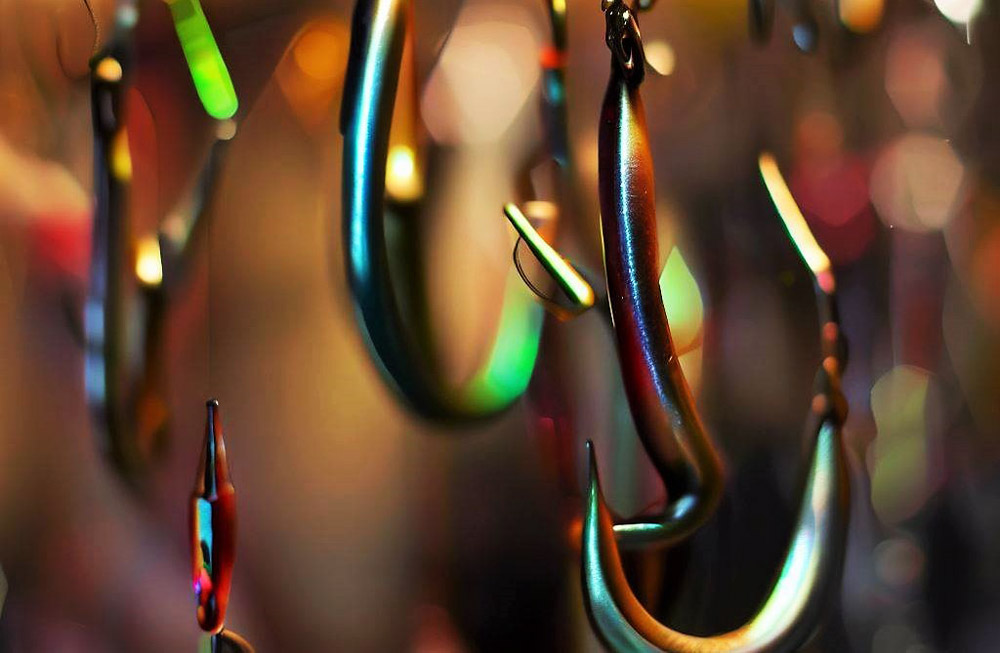
Just as every angler has their unique fishing style, so too does every jig hook have its unique design and purpose. Understanding these differences is key to choosing the right jig hook for your needs. Let’s explore some common types of jig hooks and their specific applications:
- 💦Round Bend Jig Hooks: These are the most traditional style of jig hooks, characterized by their circular hook shape. The round bend allows for the secure hooking of fish, making them less likely to shake the hook during the fight. They’re excellent for presenting live bait and are versatile for catching a wide variety of fish species in both freshwater and saltwater environments.
- 💦Wide Gap Jig Hooks: Also known as ‘extra wide gap’ (EWG) hooks, these have a larger gap between the shank and the point, allowing for the use of larger and bulkier baits. The design is intended to improve hooking efficiency by providing more room for the hook point to penetrate the fish’s mouth. They’re often used for bass fishing with soft plastic baits.
- 💦60-Degree Jig Hooks: Named for the angle between the shank and the hook eye, these hooks are designed to give jigs a specific balance and movement in the water. The 60-degree bend gives the jig a more natural, enticing presentation, making them particularly effective for game fish like bass and walleye.
- 💦Aberdeen Jig Hooks: These hooks are characterized by their light wire and long shank. The design makes them perfect for baiting with minnows and other small live baits. Due to their light wire, they can easily be bent free from snags, making them a good choice for fishing in areas with a lot of cover or structure.
- 💦Sickle or Octopus Jig Hooks: These hooks have a unique bend that looks like a sickle or an octopus arm. The design helps to keep the fish securely hooked by preventing it from leveraging itself off the hook. These hooks are often used for species that are known for their fighting prowess, such as salmon and steelhead.
Each type of jig hook is designed to optimize certain aspects of the fishing experience, from the type of bait used to the species of fish targeted and the environment fished. For example, if you’re targeting large-mouth bass in a lake with soft plastics, a wide-gap jig hook may be your best choice. On the other hand, if you’re after walleye in a fast-moving river using a jig, a 60-degree jig hook might be the better option.
🔶As with all aspects of fishing, choosing the right jig hook comes down to understanding your quarry and the conditions in which you’re fishing. By appreciating the unique design and purpose of different jig hooks, you can tailor your approach to each fishing situation and increase your chances of landing that trophy catch.
Tailoring Your Technique: The Integral Role of Jig Hooks in Fishing Methods
The beauty of jig hooks lies not only in their diversity but also in their versatility. They can be used in a variety of fishing techniques, each offering its unique challenges and rewards. Understanding how to maximize the use of jig hooks in these different fishing methods can greatly enhance your success on the water. Let’s delve into some popular fishing techniques and how jig hooks fit into the equation:
- 🧿Ice Fishing: In the icy realms, the art of jigging takes center stage. Jig hooks, paired with soft plastics or live bait, are used to entice fish in the frigid waters. Given the vertical presentation and often clear water conditions, small, subtle jigs are frequently the go-to choice. A tip to maximize your success is to use a light touch and closely watch your line for any subtle movement, which could be a fish taking the bait.
- 🧿Saltwater Fishing: In the vast and variable saltwater environment, jig hooks can be used in a range of techniques, from casting and retrieving to bottom fishing. Due to the diversity of species and often larger fish sizes, saltwater jig hooks are typically sturdier and larger than their freshwater counterparts. An expert tip for saltwater fishing with jigs is to vary your retrieval speed and occasionally pause, imitating an injured prey item.
- 🧿Fly Fishing: While fly fishing is often associated with specialized fly hooks, jig hooks have found their place in this refined angling art. They’re particularly popular for tying nymph patterns, with the weight of the jig hook allowing the fly to sink rapidly, getting it down to feeding fish. A key tip when using jig hooks in fly fishing is to adjust the weight of the jig according to the speed of the current. Faster water usually requires heavier jigs to reach the strike zone.
- 🧿Bass Fishing: In bass fishing, jigs paired with soft plastics are often used to mimic the bass’s natural prey such as crayfish. Flipping and pitching jigs into the cover is a popular technique for enticing lurking bass. The critical thing to remember when using jig hooks for bass is to choose the right size and color to match the conditions and the natural forage in the area.
🔶Jig hooks, in their many forms, offer the angler a versatile tool adaptable to diverse fishing techniques. Whether you’re ice fishing on a frozen lake or casting into the mysterious depths of the ocean, understanding how to effectively use jig hooks can significantly enhance your fishing experience. Remember, success in fishing comes from not only using the right tools but also understanding how to use them effectively.
Making the Right Choice: How to Select the Perfect Jig Hook for Your Fishing Needs
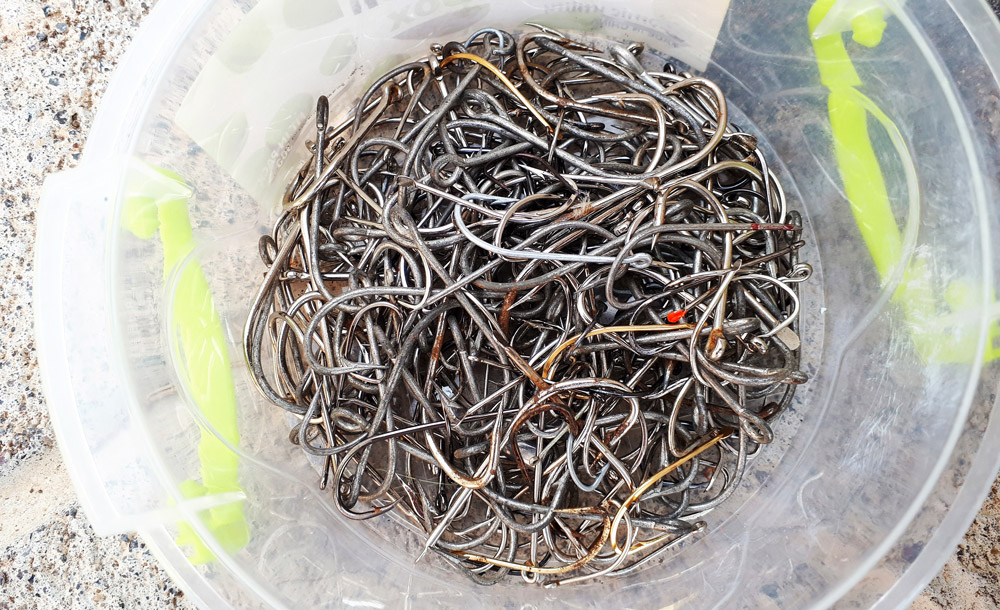
Choosing the right jig hook can often feel like a daunting task, given the plethora of options available. However, by understanding the key factors that influence a hook’s effectiveness, you can make an informed choice tailored to your fishing needs. Let’s discuss these important considerations:
- 💠Size: The size of a jig hook is determined by the species of fish you are targeting and the size of the bait you’re using. Larger fish and larger bait typically require larger hooks. However, too large a hook can deter bites, while too small a hook may not adequately secure the fish.
- 💠Shape: The shape of the jig hook affects how the bait is presented and how the hook penetrates the fish’s mouth. Different shapes cater to different fishing techniques and species. For instance, a wide gap hook is great for soft plastics, while a round bend might be better for live bait.
- 💠Material: The material from which a jig hook is made affects its strength, sharpness, and corrosion resistance. High-carbon steel and stainless steel are common materials. If you’re fishing in saltwater, corrosion-resistant materials or coatings are essential.
- 💠Type of Fish: Certain species of fish may require specific hooks. For example, bass are often caught on wide-gap hooks due to the size of their mouths and the type of bait used.
- 💠Fishing Environment: Your fishing environment also influences the type of jig hook you choose. If you’re fishing in an area with a lot of structure, you may need a hook that’s less likely to snag, like an Aberdeen jig hook.
When it comes to matching your jig hook to your bait for optimal results, there are a few things to consider:
- 🔷Size of Bait: The size of the hook should be proportionate to the size of the bait. The hook should be large enough to effectively hook the fish but not so large that it overpowers the bait.
- 🔷Type of Bait: Certain baits work better with certain hooks. For example, live bait often works best with round bend hooks, while soft plastics are typically paired with wide-gap hooks.
- 🔷Bait Presentation: The shape and design of the jig hook can influence how the bait moves in the water. For instance, a 60-degree jig hook can give a jig a more enticing, natural movement.
🔶Choosing the right jig hook is not an exact science; it involves a bit of trial and error. However, by taking into consideration the size, shape, material, the type of fish you’re targeting, and the environment in which you’re fishing, you can significantly increase your odds of success on the water. Matching your jig hook to your bait optimally further ensures that you present an irresistible offer to your quarry, bringing you one step closer to that dream catch.
Securing Success: Mastering the Art of Tying a Jig Hook

Tying a jig hook to your fishing line is an essential skill that every angler must master. The quality of your knot can mean the difference between a successful day on the water and a day of missed opportunities. Below is a step-by-step guide on how to properly tie a jig hook using a popular and reliable knot, the Palomar knot:
- 🌌Double your line: Start by doubling about 6 inches of your fishing line to make a loop.
- 🌌Pass the loop through the eye of the hook: Pass the loop through the eye of the jig hook. Make sure the loop is large enough to later pass over the hook.
- 🌌Tie an overhand knot: With the loop, tie a simple overhand knot.
- 🌌Pass the loop over the hook: Open up the loop you’ve just made from your overhand knot and pass it over the hook.
- 🌌Tighten the knot: Pull both ends of the line to tighten the knot. Make sure the loop is under the eye of the hook and the knot is snug against the eye.
- 🌌Trim the tag end: Cut off the excess line from the tag end, leaving about 1/8 inch.
However, even with these instructions, it’s possible to make mistakes. Here are common errors to avoid when tying a jig hook:
- 🔵Not moistening the knot: Before tightening your knot, it’s crucial to moisten it with saliva or water. This reduces friction and heat which can weaken the line when the knot is pulled tight.
- 🔵Leaving too long a tag end: After trimming, ensure the tag end is short but not too short. Leaving it too long can cause it to get tangled or caught, but too short a tag can slip out.
- 🔵Rushing the process: Tying a secure knot takes patience and care. Rushing can lead to sloppy knots that can easily come undone.
- 🔵Not testing the knot: Always test your knot by giving it a firm tug before casting. If the knot slips or breaks, it’s better to discover this before a fish does!
🔶By taking the time to learn and master the art of tying a jig hook, you’ll ensure that when the big catch bites, your line will hold strong. Practice makes perfect, so don’t be discouraged if you don’t get it right the first time.
Ensuring Longevity: Best Practices for Jig Hook Care and Maintenance
While jig hooks are generally quite durable, proper maintenance and care can significantly extend their lifespan and ensure their effectiveness for successful fishing expeditions. Let’s discuss some best practices for maintaining and caring for your jig hooks:
- ☑️Cleaning: After each fishing trip, especially in saltwater environments, it’s vital to clean your jig hooks to remove any salt, dirt, or other debris. This can be done simply by rinsing them in fresh water and then drying them thoroughly to prevent rust.
- ☑️Checking for Sharpness: The point of your hook is where the action happens, so keeping it sharp is crucial. Regularly check the sharpness of your jig hooks and use a hook sharpener if needed. A dull hook can lead to lost fish, so don’t neglect this simple yet critical maintenance task.
- ☑️Inspecting for Damage: Over time, hooks can become damaged or bent out of shape, particularly after catching a large or hard-fighting fish. Regularly inspect your hooks for any signs of damage, and replace those that can’t be repaired.
- ☑️Lubrication: For jig hooks with moving parts, like certain types of articulated hooks, regular lubrication can keep them functioning smoothly.
Proper storage is another critical aspect of jig hook care. Here are a few tips for storing your jig hooks correctly:
- 🦠Dry Storage: Store your hooks in a dry location. Moisture is the enemy of metal and can cause hooks to rust over time.
- 🦠Organized Storage: Keeping your hooks organized can not only help you find the right hook when you need it but can also prevent hooks from damaging each other. Use a hook box with separate compartments for different sizes and types of hooks.
- 🦠Protective Coverings: For hooks with particularly sharp points or barbs, using protective coverings can help maintain their sharpness while also preventing accidental injury.
🔶Proper care and maintenance of your jig hooks play a crucial role in your success on the water. A well-maintained hook is more effective, more reliable, and safer to use. By following these best practices, you’ll ensure that your jig hooks are always ready for your next fishing adventure.
Hooked on Success: Real Stories of Jig Hooks Making the Catch

Jig hooks, in the hands of experienced anglers, have been the key to many a triumph in the fishing world. Let’s delve into some inspiring success stories and case studies involving these versatile hooks:
Case Study 1: Mark Davis and the Wide Gap Jig Hook
👨🦱Mark Davis, a professional bass angler🎣, has a unique relationship with wide-gap jig hooks🪝. While competing in a major tournament🏆, Davis found himself in challenging conditions with heavily vegetated waters🌿. With a keen understanding of the habitat, he realized that the bass would likely be hiding in the thick vegetation, which would be hard to penetrate with a regular jig hook.
Opting for a wide gap jig hook allowed Davis to rig his soft plastic bait in such a way that it could slip through the heavy vegetation without getting snagged🌿. The wide gap hook’s design also increased the hookup ratio due to its larger bite, leading to a better hook set✅. Davis’s strategy paid off, netting him a tournament win🥇 and cementing his faith in the wide gap jig hook’s effectiveness in similar conditions👏💪.
Success Story 2: Sarah Williams and the Round Bend Jig Hook
👩🦳Sarah Williams, a renowned saltwater fly angler, swears by the use of round bend jig hooks🪝 for tarpon fishing. In one memorable fishing expedition in the Florida Keys🌴, Williams was faced with large tarpon🐟 that was proving elusive to conventional hooks and bait.
Using a round bend jig hook, she was able to present her fly in a unique way that seemed more enticing to the tarpon. The round bend design kept the hook point aligned for better hook penetration and a secure hold, which is essential when dealing with strong, acrobatic fish like tarpon. Her choice of jig hook helped her land an impressive tarpon that day🎣, a testament to the effectiveness of the right jig hook selection👏.
🔶These stories underscore the importance of understanding and choosing the right jig hook for the specific fishing situation. Every angler may have their preferred hook, but it’s the ability to adapt and choose the right tool for the job that truly sets apart a good angler from a great one🥇. Whether it’s a wide gap jig hook for heavy vegetation🌿 or a round bend jig hook for elusive tarpon, the jig hook remains an unsung hero in these anglers’ success stories💪🎉.
FAQ: How Jig Hooks Make a Difference in Fishing
Conclusion: Mastering the Jig Hook An Essential Skill for Every Angler
From their humble beginnings to the wide variety available today, jig hooks have cemented their place as an essential tool in an angler’s arsenal. Their versatility makes them suitable for various fishing techniques and environments, whether it’s ice fishing in a frozen lake or saltwater fishing in the vast ocean.
We’ve explored the anatomy of jig hooks, delved into their different types and applications, learned how to tie and care for them, and discovered how professionals leverage their strengths to reel in successful catches. These insights demonstrate the importance and potential of jig hooks in fishing, underlining the fact that your choice of hook can significantly impact your fishing experience.
The world of jig hooks is as broad as it is deep. Just as the right bait is crucial to attracting your target fish, selecting the right jig hook for your specific situation can make the difference between landing your dream catch and telling a tale about the one that got away.
As we conclude, I would like to leave you with some final thoughts and advice. Don’t be afraid to experiment with different jig hooks and techniques. It is through trial and error that you will find the perfect combination for your fishing style and targets. Always remember to maintain and care for your hooks properly to ensure their longevity and effectiveness.
🔶As we’ve seen from the stories of professional anglers, the humble jig hook can play a significant role in achieving fishing success. So go out there, put these tips to the test, and experience first-hand how the right jig hook can elevate your fishing game. After all, the magic of fishing lies in the thrill of the catch, and with the right jig hook, that big catch is just a castaway.
Your Turn to Cast Off: Engage, Explore, and Enhance Your Fishing Experience
As we reach the end of this comprehensive guide on jig hooks, we would like to invite you to become a part of the larger conversation. Your experiences and insights are valuable, and sharing them will help create a richer, more diverse knowledge pool for all anglers.
Have you had a memorable catch thanks to a specific type of jig hook? Do you have a unique jig hook selection strategy that’s worked wonders for you? Maybe you’ve encountered a challenge while using a jig hook, and you’re seeking advice on how to overcome it. Whatever your story or question, don’t hesitate to share it. Your contributions will not only enrich your own understanding but could also inspire or help fellow anglers.
To further your knowledge and mastery of jig hooks, we also encourage you to explore more about these vital fishing tools. There are numerous resources available, from books and online articles to instructional videos and forums, where you can learn from experts and fellow fishing enthusiasts. You could also attend fishing workshops or seminars where you could get hands-on training on using and choosing jig hooks.
🔶Remember, the art of fishing is a constant learning journey. The more you explore and experiment, the more skilled and successful you become. Keep challenging yourself, keep asking questions, and keep sharing your experiences. Let’s continue to learn, grow, and celebrate the joy of fishing together.

I live in Tenerife (Canary Islands) for the last 10+ years and share my daily fishing experiences on my website. Many years of personal experience as a fisherman and the vast experience of my friends allow me to write professionally on any fishing topics (from choosing a flashlight and equipment to deep-sea fishing).
All of my advice is based on practical real-world experience and will be useful to both novice anglers and professionals. Read more about the author.
Affiliate Disclosure: FishReeler.org sometimes gets paid for listings, through sponsors or affiliate programs like Amazon, Ebay, Cabelas, Bass Pro Shop, Shimano, Daiwa, Rapala, Renn, Okuma, KastKing, etс. Clicking a link helps keep FishReeler.org free, at no extra cost to you!
About the author: Each article is verified by the fishing expert Sergio Smirnoff. The articles are written by professional and amateur fishermen with 20+ years of fishing experience.
Note: The views and opinions expressed in this article are those of the authors and do not necessarily reflect the official policy or position of any agency. The articles are for informational purposes only, share your opinions in the comments and join the fishing discussions, let's share our fishing experiences together!

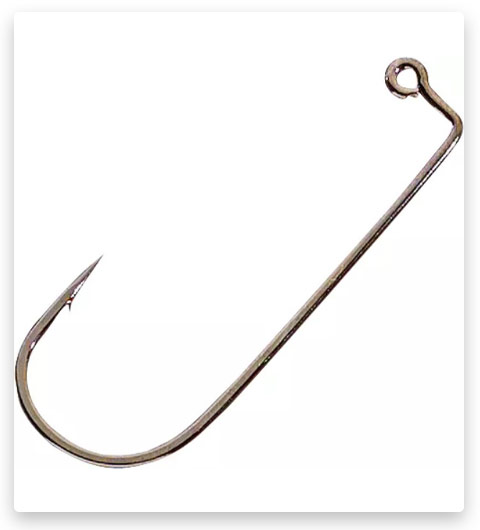


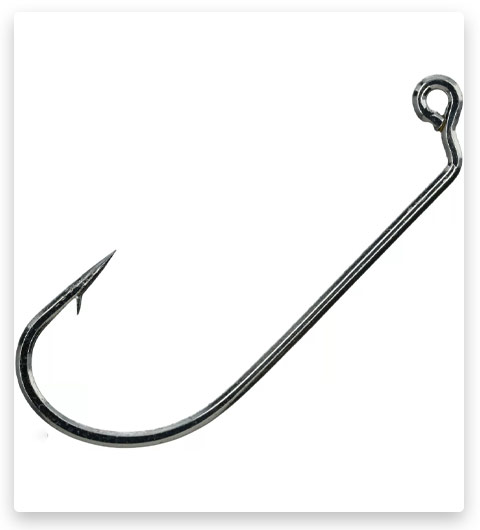
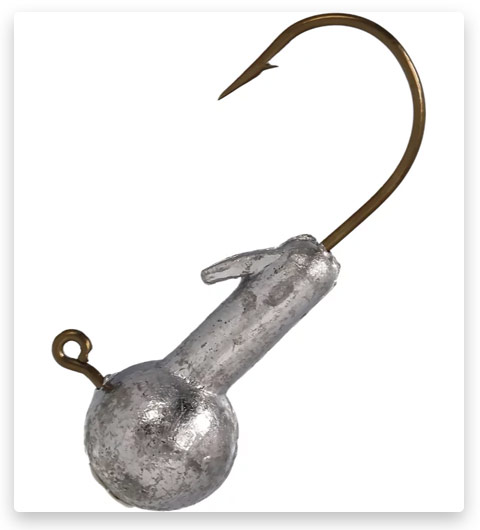
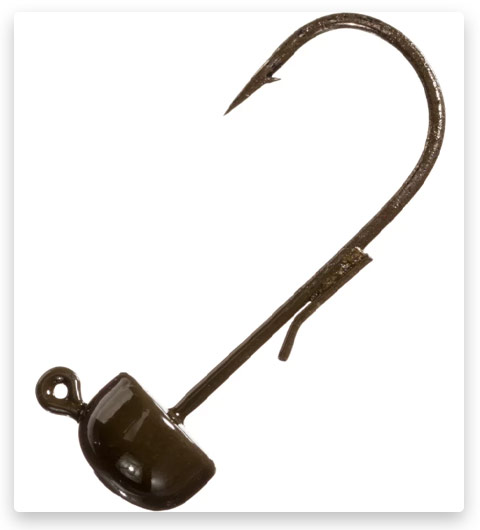


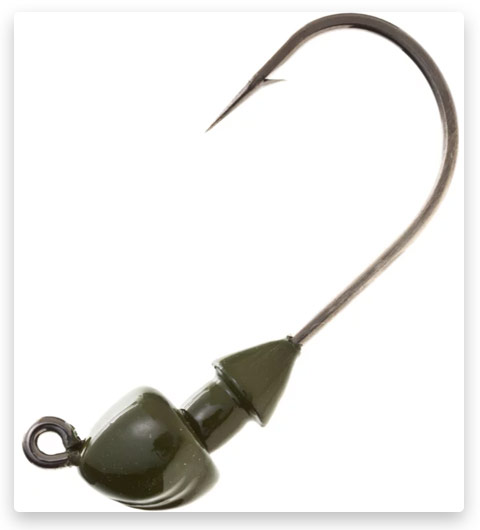

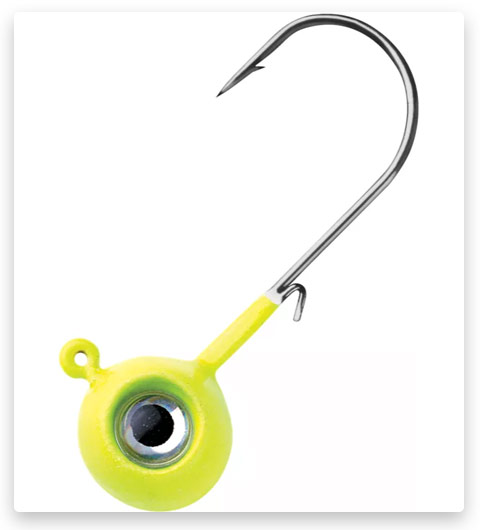
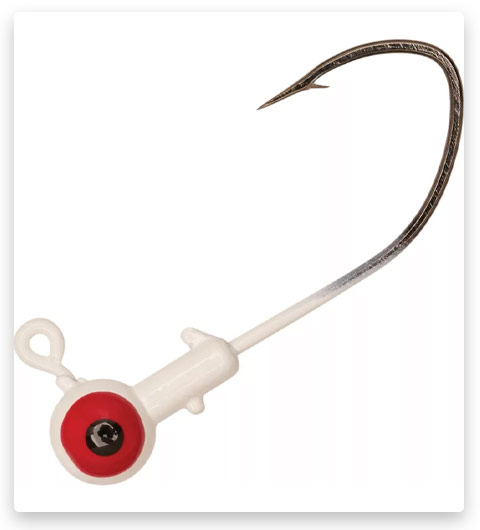

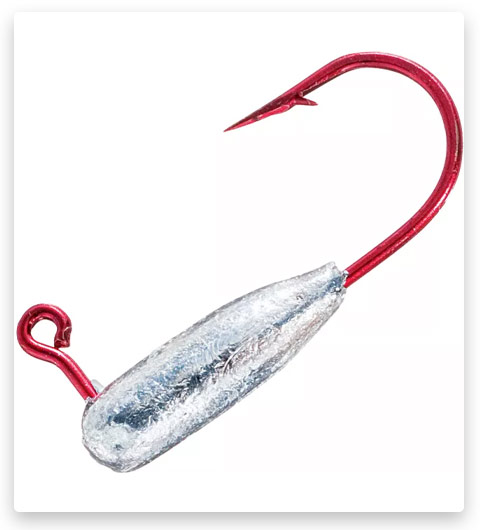
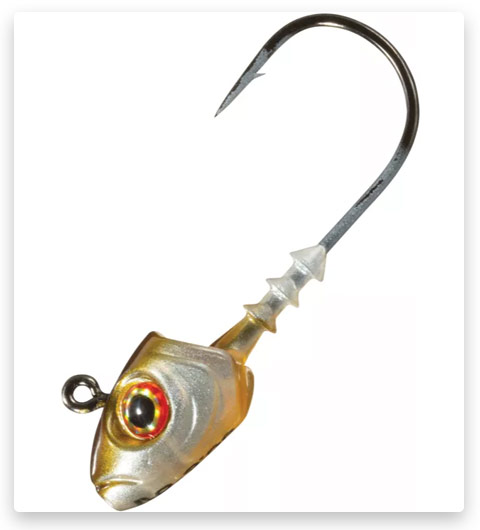
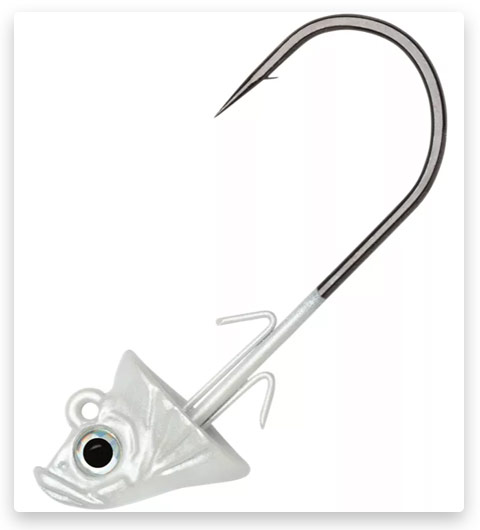
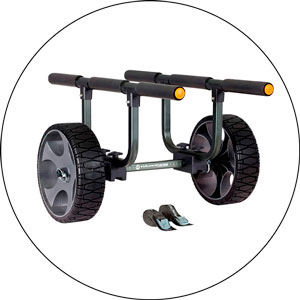

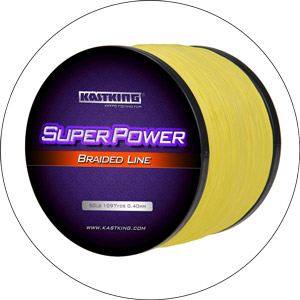
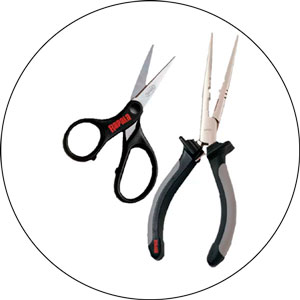

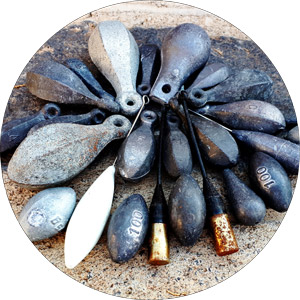
I’ve always had trouble finding the right hooks for jug fishing. This list is a game-changer! The Mustad UltraPoint Hook looks like it would be perfect for the catfish I usually target. Thanks for sharing.
As a beginner jug fisherman, I found this article extremely helpful. The descriptions and recommendations for each hook were very clear and gave me a good idea of which one would suit my needs. I’ll definitely be trying out the VMC Hybrid Hooks for my next outing.
Great article! I’ve been jug fishing for years and it’s always helpful to have a reliable hook. Glad to see some of my favorites on the list, like the Gamakatsu Octopus Hook. Can’t wait to try out some of the others mentioned as well.
Love the variety of hooks listed in this article. It’s great to have options for different types of fish and techniques. The Eagle Claw Lazer Sharp Hooks have always been a go-to for me, but I’ll have to give the Owner Cutting Point Hooks a try as well. Thanks for the useful information!
Great article! I love jug fishing and have found that using the right hooks can make a big difference in the success of my outings. The Gamakatsu Superline Spring Lock Plus hooks are a personal favorite of mine because of their durability and strength. I also appreciate that the spring lock design helps to keep the bait securely in place.
I have also had good luck with the Eagle Claw Lazer Sharp L774JF Jug Hooks. They have a sharp point and durable construction, making them a reliable choice for jug fishing.
It’s important to find a hook that is strong and durable enough to handle the rigors of jug fishing, as well as one that can hold the bait securely. These two options seem to fit the bill perfectly. Great job on the article!
📝I’m new to fishing, and this article was so helpful! I learned a lot about jig hooks🪝, their purpose, and why they are important. The historical evolution was fascinating too. It’s great to see how these hooks have been innovated over time to improve the fishing experience for all of us.
Your article struck a chord with me🎶. My grandpa used to say the same thing – fishing is not just about the rod, it’s about understanding your tools. Your insight into jig hooks and their evolution not only provided me with valuable knowledge but also reminded me of the precious lessons from my grandpa.👴
This was a thoroughly engaging read!👍 I appreciate the way you have woven a historical perspective into the evolution of jig hooks. It’s intriguing to think about how a seemingly simple piece of equipment has a rich backstory and a critical role to play in successful fishing.
What a beautiful tribute to jig hooks and fishing!🐠 As a professional angler, I can vouch for the importance of choosing the right jig hook. It really can be the difference between landing a catch and losing a fish. Thanks for shining a light on this crucial component of our gear.
I loved reading this! As an amateur angler, I’ve always been fascinated by the complexity and depth of fishing. This piece helped me understand the significance of jig hooks🪝 in the grand scheme of things. It also drove home the point that every tool in our tackle box is a result of centuries of evolution and innovation.
This article truly touched my heart!💖 It perfectly captures the essence of early morning fishing – the calmness, the anticipation, the silent hope. I was instantly transported back to my childhood fishing trips with my dad. Jig hooks really are the unsung heroes of fishing, and this tribute is so well-deserved.